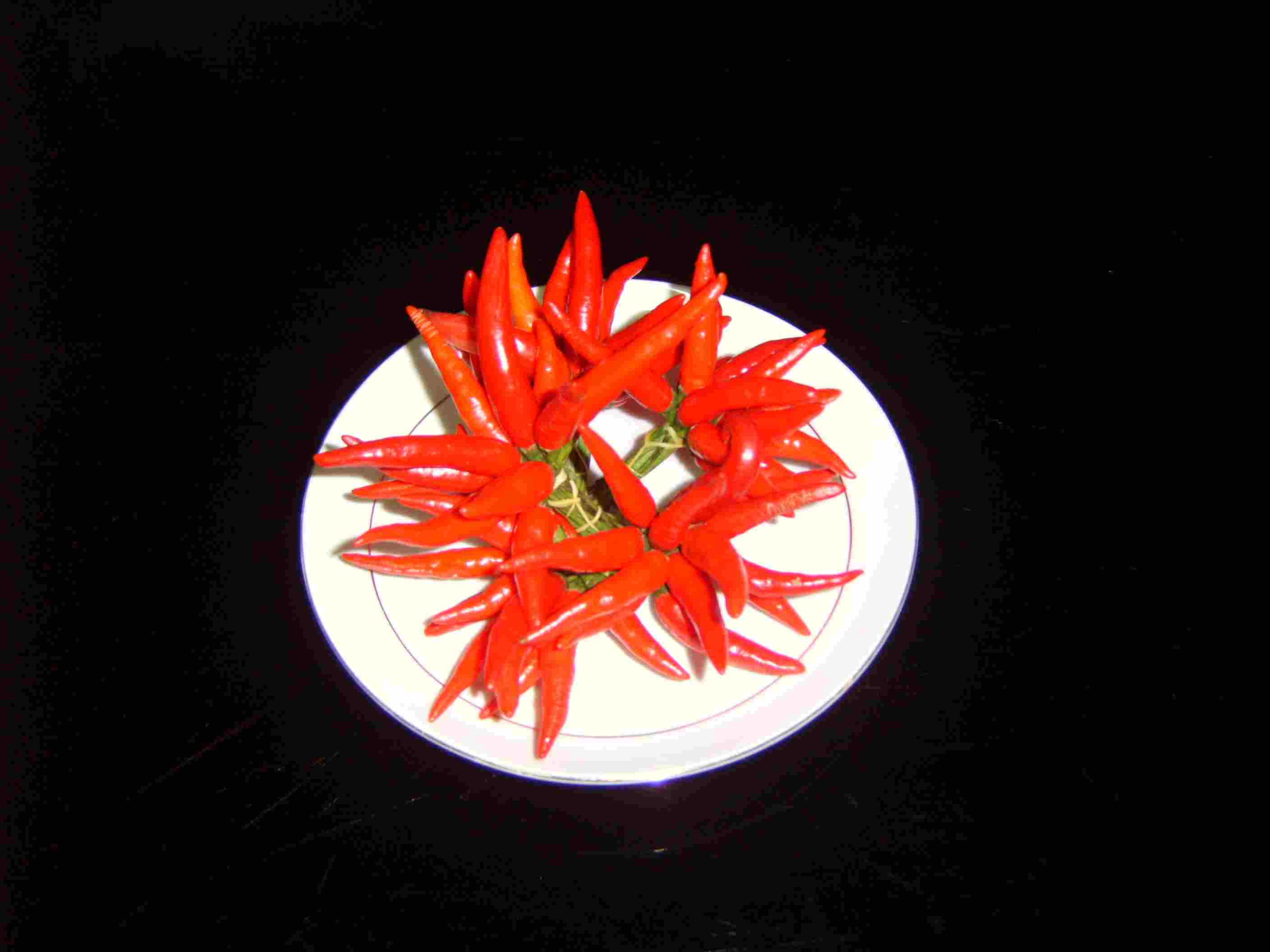

| Materials | Method of preparation | How to use | Target pests |
| All- purpose insect pest spray
(Organic Gardening, 1996) 1 tsp powdered red hot pepper n1 garlic bulb 1 small onion 1 liter of water 1 tbsp of soap Knife Strainer Basin/pail |
Chop onion and garlic. Add powdered red pepper. Mix the above ingredients into the water. Soak for 1 hour. Strain. Add soap. Stir well. |
Fillin the sprayer. Spray plants thoroughly. If no sprayer is available, make soft straw brush and wet plants with the extract. Repeat spraying when necessary. |
Leaf eating pests |
| Chili spray (HDRA, 2000)
4 cups of ripe hot peppers or 5 cups of chili seeds 30 grams of soap Cooking pot Strainer |
In a pot, boil ripe pods or chili seeds in water for 15-20 minutes. Take the pot from the fire and add 3 liters of water. Cool and strain. Add soap. Stir well. |
Spray on infested plants. |
Ants Aphids Caterpillars Flies Mealybugs |
| Chili and neem leaves extract
(Stoll, 2000: p. 109) 10-20 pieces of hot pepper 2-2.5 kg fresh neem leaves 21 liters of water 2 tbsp of powdered soap Mortar and pestle Basin/pail |
Pound hot pepper and neem leaves. Add to 1 liter of water. Soak the mixture overnight. Strain. |
Add 20 liters of water and the powdered soap to the filtrate. Stir well. Fill-in the sprayer. Spray on infested plants. Spray early morning or late afternoon. |
Armyworm Whitefly nMosaic virus |
| Chili and neem seeds extract (Stoll, 2000: p. 109) 12 pieces chopped hot chili 200 grams fully dried and shelled neem seeds 4 liters of water Basin/pail Grinder Knife |
Grind the neem seeds. Soak the ground neem seeds in water overnight. Add the chopped hot chili. Strain. |
Fill in the sprayer Spray on the infested plants thoroughly. |
Aphids Diamondback moth Sucking and chewing insects Whitefly |
| Chili, custard apple, neem extract
(Sridhar; et. al., 2002: pp. 33-34) 25 grams of dried chili pods 100 grams of custard apple leaves 50 grams of crushed neem fruits 20 ml of soap Grinder Wide-mouth bottles nPail |
Grind dried chilies. Soak overnight in 100 ml of water. Soak crushed neem fruits overnight in 200 ml of water. The next day filter both extracts. Grind the custard leaves. Add 500 ml of water. Strain. Mix all 3 filtrates. |
Add 5-6 liters of water to the filtrate. Add soap. Stir well. Spray on infested plant parts, preferably early morning or late afternoon. |
Aphids Leafrollers Red scales Spotted beetles |